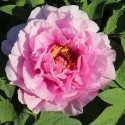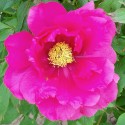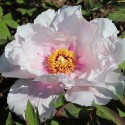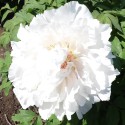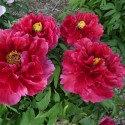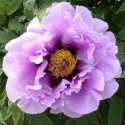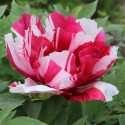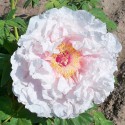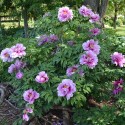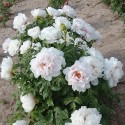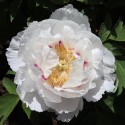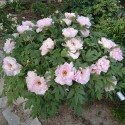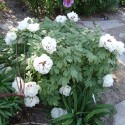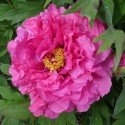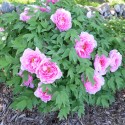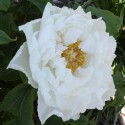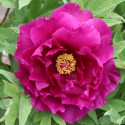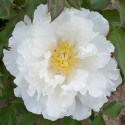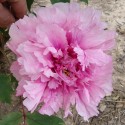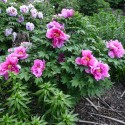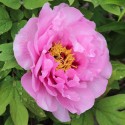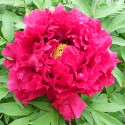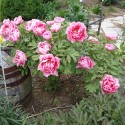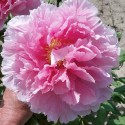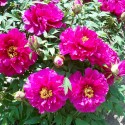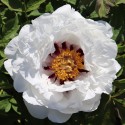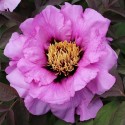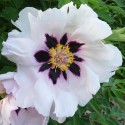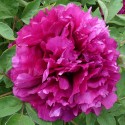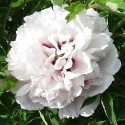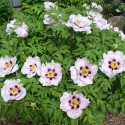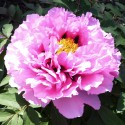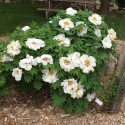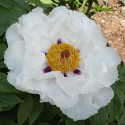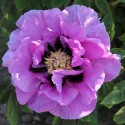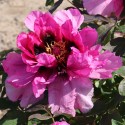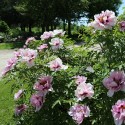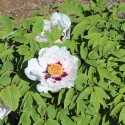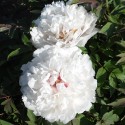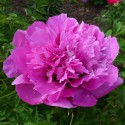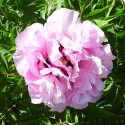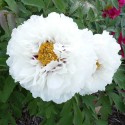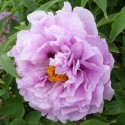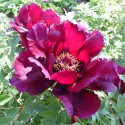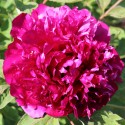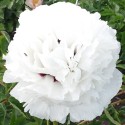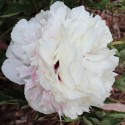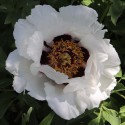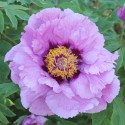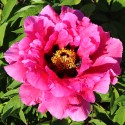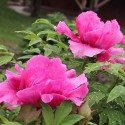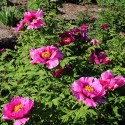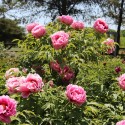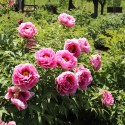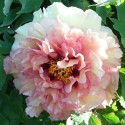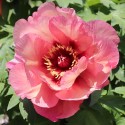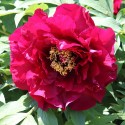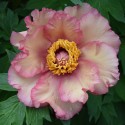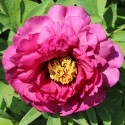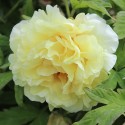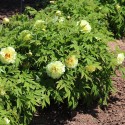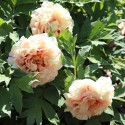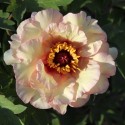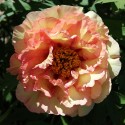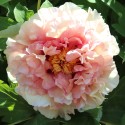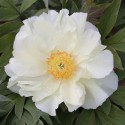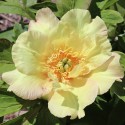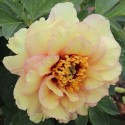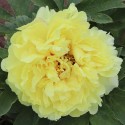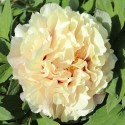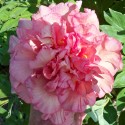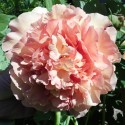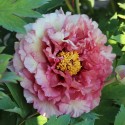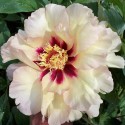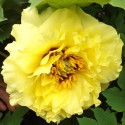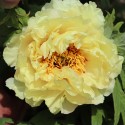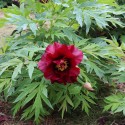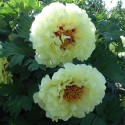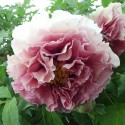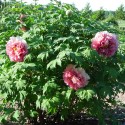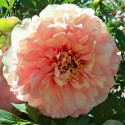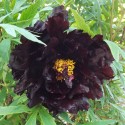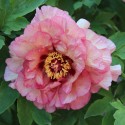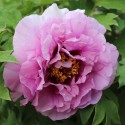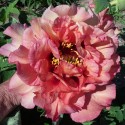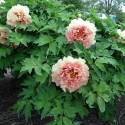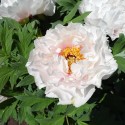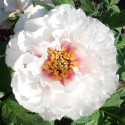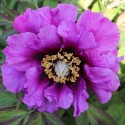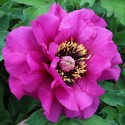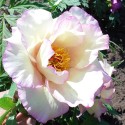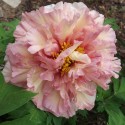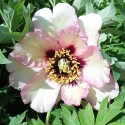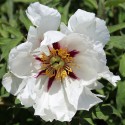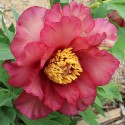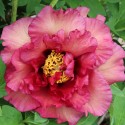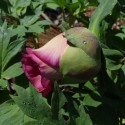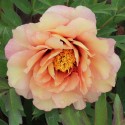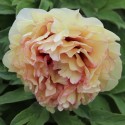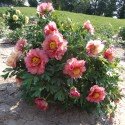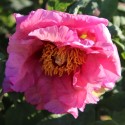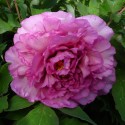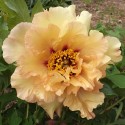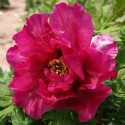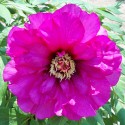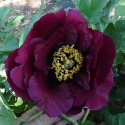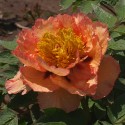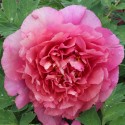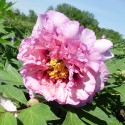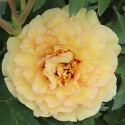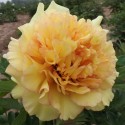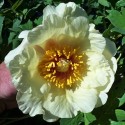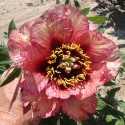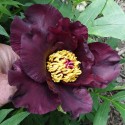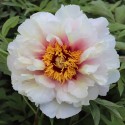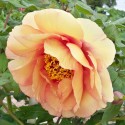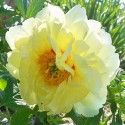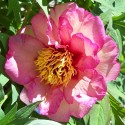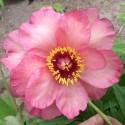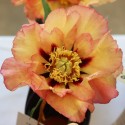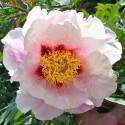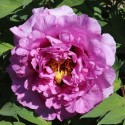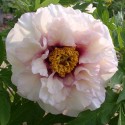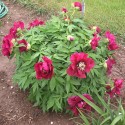Introduction to Woody Peonies (Tree Peonies)
November 27, 2019

Woody Peonies-Our Specialty
Commonly Known as Tree Peonies
Woody peonies, often incorrectly referred to as ‘tree peonies’ have a long history in gardens around the world-not so much in the United States. Plants do not reach ‘tree’ status in size, but rather, are small to medium sized shrubs. The first and most numerous cultivars offered to American gardeners were a group of woodies referred to as ‘Paeonia suffruticosa‘, mostly of Chinese origin. Unfortunately, the Chinese P. suffruticosa plants are poorly adapted to our more variable climate and many failed, giving the woody peony the label of ‘difficult to grow’. In reality, many other groups exist within the woody peony umbrella of plants and there is great opportunity for finding productive and more carefree garden subjects. Unfortunately, the best subjects for our gardens have not been widely available for a number of reasons, which will be addressed in other posts.
The woody peonies begin bloom in the early part of the peony bloom season, starting with Paeonia suffruticosa cultivars exhibiting their large billowy flowers in profusion. Many of the plants in this group are of Japanese origin and were developed in a climate more closely resembling ours, making them better garden candidates than those developed in China. There are an equal number of American and European hybrids, which have not been as widely distributed and are often better than the historic Japanese cultivars. Most of these plants reach a height of around 3 to 4 feet in height in Wisconsin with an equal spread. Flower colors range from red, white, pink, lavender to some blending of these colors.
The next group to commence bloom are the very hardy Paeonia rockii cultivars, often with deeply flared petals on their flowers. The group originates from the coldest parts of China and there are numerous unregistered cultivars represented from the country. Good numbers of American and European selections are now becoming available, having a number of different floral and plant characteristics. Due to greater hardiness of stems, plants often become larger than the suffruticosa cultivars. Individual cultivars may attain heights of 6 to 7 feet in Wisconsin and a greater width, dependent on age and location. Numerous cultivars are the product of crosses with P. suffruticosa cultivars and these perform well in similar conditions, but tend to be smaller plants in stature and breadth. These are excellent candidates for colder areas in which woody peonies are grown and are tolerant of temperatures to -30F , showing no damage. Flowers are large, produced in profusion, and have face up carriage.
Last to flower in the progression of woody peony bloom are the variably colored and formed Lutea hybrids. Originating from a cross of Paeonia delavayi x Paeonia suffruticosa, this hybrid group is a relative new comer to the peony world. This group is mostly made up of American and European origin cultivars, although a number have been hybridized elsewhere. Flowers in this group are the most diverse in color and form, attributable to their much varied genetic background. Flower colors in this group are often blends and may be highly variable due to annual climate conditions. All colors are represented except for true blue and perhaps a solid orange. A number cultivars have orange expressions due to blending of other colors, but stability from season to season is not consistent. Forms range from single, semi-double to full double. Flower carriage in older double hybrids is often down facing (example: ‘Souvenir de Maxime Cornu’), but newer hybrids express more outward and upward presentation. Plants in Wisconsin typically grow from 2.5 to 4 feet, depending on cultivar. Width is usually a bit more than their height. Lutea hybrids have the least winter stem hardiness of all woody peonies, but are prodigious growers of new stems from below the ground. New stems often produce blooms after old stem loss from winter kill, this is a contrast from the other groups which bloom on older wood. While stem hardiness is somewhat less, the plants exhibit hybrid vigor and are more disease resistant than the other groups. Foliage is as variable as the flowers are from cultivar to cultivar, many lending themselves to excellent landscape plants out of bloom.
There is much to learn and know about the plants and flowers produced in this group, which is helpful in selection and expectations. Solaris Farms specializes in woody peonies and is continuously testing existing cultivars and new hybrids developed here in our northern tier gardens. As we add plants to our collection and trials, new information is continually being added to our knowledge base and we are glad to share as time permits. Further reliable information can be found in our Culture and Care section, as well as, on the American Peony Society website.

